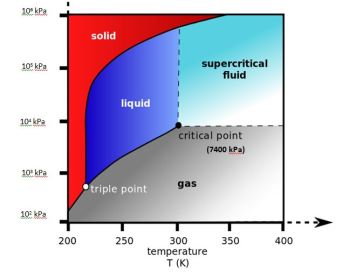In the just published (2015) The Optimistic Environmentalist, David R. Boyd, a Canadian environmental lawyer reveals the history of a movement that is not only gathering momentum but is both realistic and necessary. Although he makes it clear that the future needs to be far greener, he focuses on outlining recent accomplishments and on revealing the ideas, approaches and technologies that will lead to more improvements.
What has worked is a combination of legislation at the national and global level and innovative action at the level where 54% of the population lives, in cities. These efforts have led to many improvements in water and air quality, in using renewable energy-forms and in cycling resources.
We will begin with examples of environmental laws and treaties. Signed in 1998 and coming to force 6 years later, the Rotterdam Convention limits the trade of pesticides and industrial chemicals that have been banned or severely restricted. The Stockholm Convention of 2001 went further by originally banning a dozen environmentally-persistent and toxic organic compounds including polychlorinated biphenyls(PCBs) and dioxin, both of which are class 1 carcinogens, meaning that like radium isotopes and tobacco smoke, they are known to cause cancer . Also good news is what Boyd forgot to mention, that the Stockholm Convention continues to add more compounds to the list. Most recently, in 2013, they added the flame-retardant hexabromocyclododecane, to bring the total number of compounds on the list to twenty.
The widely-travelled hexabromocyclododecane, which is widely found in the environment and in human breast milk, is highly toxic to aquatic organisms and can potentially have all sorts of physiological effects on humans.
Through strict logging rules and by forcing large landowners to keep half their property forested, Brazil has slowed down deforestation and cut greenhouse gas emissions by 39% between 2005 and 2010. After Boyd penned his book, it has become apparent that in the last 2 years, a growing black market has been downright negligent of the law, and deforestation is on the rise again. But having legislation in place leaves less to be done and it makes it possible to arrest key people, as they did in February.
 Not to spoil it for those who have yet to read his book, rather than giving away Boyd’s examples of the green movement in his nearby city of Vancouver or in the even more progressive city of Amsterdam, I will look at what’s being done in my own city of St. Laurent in Quebec, Canada. Cognizant of the fact that 45% of waste materials in the city currently consists of green waste and food scraps, the city will embark on a waste-organic collection beginning this autumn. Instead of burying it in landfills where it will generate the greenhouse gases methane and carbon dioxide, the waste will be collected weekly by the city in large, freely-distributed aerated bins. The organic material, which will include all food, soiled paper, garden greens and ashes, will be sent to a processing plant to make compost. Compost, which prevents soil erosion and provides some fertilizer, will be not only used in city parks but freely distributed to citizens to encourage the maintenance of backyard organic gardens, which in turn have more beneficial results for both citizens and the environment.
Not to spoil it for those who have yet to read his book, rather than giving away Boyd’s examples of the green movement in his nearby city of Vancouver or in the even more progressive city of Amsterdam, I will look at what’s being done in my own city of St. Laurent in Quebec, Canada. Cognizant of the fact that 45% of waste materials in the city currently consists of green waste and food scraps, the city will embark on a waste-organic collection beginning this autumn. Instead of burying it in landfills where it will generate the greenhouse gases methane and carbon dioxide, the waste will be collected weekly by the city in large, freely-distributed aerated bins. The organic material, which will include all food, soiled paper, garden greens and ashes, will be sent to a processing plant to make compost. Compost, which prevents soil erosion and provides some fertilizer, will be not only used in city parks but freely distributed to citizens to encourage the maintenance of backyard organic gardens, which in turn have more beneficial results for both citizens and the environment.
The city has also joined the rest of the Montreal urban area in creating bike lanes to encourage the use of zero-emission vehicles as a means of transportation. One stretch between two major avenues has a solid barrier to ensure the safety of cyclists. Safety concerns often deter citizens from using their bikes on a daily basis. Such efforts will help keep Montreal on Copehagen’s top 20 list of bike-friendly cities of the world.
The recently constructed public library , la Bibliotheque du Boisé, uses geothermal energy and passive solar heating exclusively to reduce its ecological footprint. Water is pumped underground to cool in the summer and warmed up in the winter for purposes of air-conditioning and heating, respectively. That means the former does not rely on any synthetic coolants. How many of us realized that although the 1987 Montreal protocol banned ozone-destroying CFCs, the substitutes still lead to global warming? Fortunately, one such substitute, tetrafluoroethane (C2F4H2), is being phased out and being replaced with HFO-1234yf.
Instead of grass, the front of the library has local wildflowers, some of which are leguminous, to reduce the need for watering, mowing and fertilizing. The back is part of a small forest reserve, adjacent to a feeding ground for monarch butterflies. In case of heavy rain, water is collected by reservoirs to prevent runoff into storm drains. To construct the library, half the wood was certified by Forest Stewardship Council and 15% of the metal was from recycled sources.
Hopefully, this effort will inspire the province and country to adopt more stringent building codes. Such an approach is needed for all new construction projects, while citizens need incentives to upgrade older buildings to greener standards. The contagious efforts of David Boyd will help the vision materialize.










